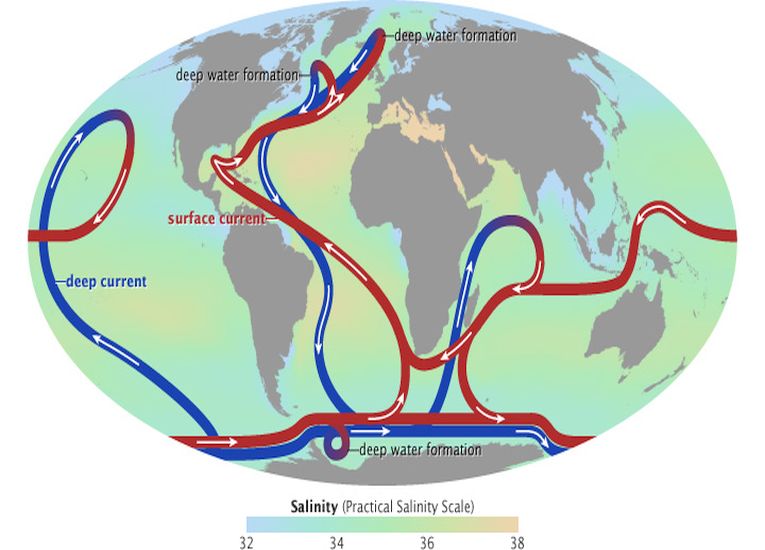The mapping of currents deep in the oceans has been a protracted study. A combination of deep ocean sediment core samples and NASA imaging now reveal that climate change is affected at least as much by the sea as by the air temperature. Rutgers University academics Stella Woodard, Yair Rosenthal, Kenneth Miller, James Wright, with Kira Lawrence (Lafayette College) and Beverly Chiu, all contributed to the paper in the journal Science that puts a new perspective on climate change.
We recently looked at Atlantic/Pacific deep ocean current links in Ocean temperature alarm call. The amount of greenhouse gases in circulation within our oceans has also possibly been underestimated. As the earth has cooled over the last 2.7 million years and continental ice has built up, ocean circulation changed to that we saw in the previous paper. The cause could have been the major expansion in northern hemisphere glacier volume, associated with falls in sea level. Heat and CO2 began then to be pulled into the Atlantic and moved from north to south before being conveyed to the Pacific and released. Antarctic ice would have played a role too, cutting off heat exchange at the surface there, and forcing heat energy to the depths.
And the effects of carbon dioxide? Well, 3 million years ago, in the late Pliocene, we had similar levels of the gas in the atmosphere, with higher temperatures (around 2.3oC.), so there is a possibility we could assume those ancient oceanic and atmospheric conditions again. Phew!
Global climate change was not caused then by carbon dioxide levels rising, so the ice changes explain the cooling instead. That modern circulation in the oceanic deeps is revealed in sediment core samples up to 3.3 million years old. Prof. Yair Rosenthal has the last word on that with his summary here. ."Our study suggests that changes in the storage of heat in the deep ocean could be as important to climate change as other hypotheses -– tectonic activity or a drop in the carbon dioxide level - and likely led to one of the major climate transitions of the past 30 million years,










